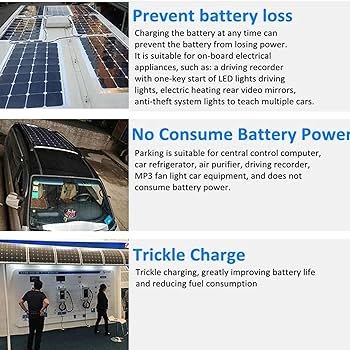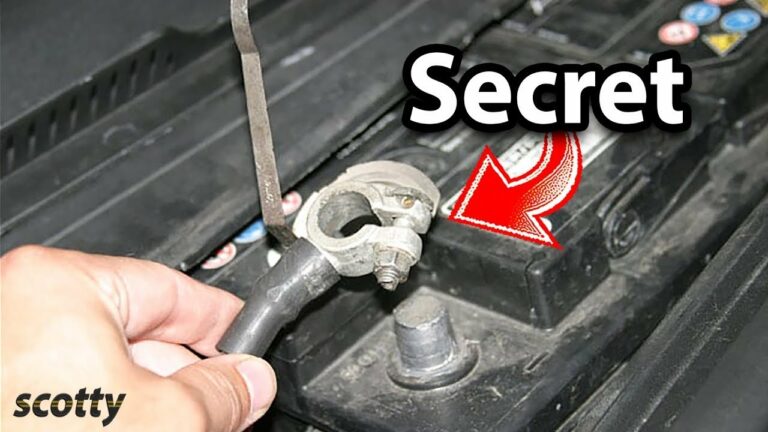Prevent Car Battery Drain On Long Drives
Planning a long drive? Worried about your car battery losing power along the way? Look no further! In this article, we will reveal effective strategies on how to prevent car battery from losing power during long drives. Don’t let a dead battery ruin your journey – we’ve got you covered. From simple precautions to proactive maintenance, we’ll share practical tips to ensure your battery stays charged, keeping you on the road without a hitch. So, let’s dive in and discover how to keep your car battery running smoothly during those extended drives.
How to Prevent Car Battery from Losing Power During Long Drives?
Driving long distances can put a strain on your car battery, especially if you have a lot of electronic devices running or if your battery is already nearing the end of its lifespan. The last thing you want is to be stranded in the middle of nowhere with a dead battery. Fortunately, there are several steps you can take to prevent your car battery from losing power during long drives. In this article, we will explore these preventive measures and provide you with helpful tips to keep your battery charged and your journey uninterrupted.
1. Check and Maintain Battery Health Regularly
A healthy battery is essential for a trouble-free long drive. Regularly checking and maintaining your battery health will help prevent unexpected power loss. Here are some important steps to consider:
1.1 Perform Visual Inspection
Inspect the battery for any signs of corrosion, leaks, or damage. Make sure the battery terminals are clean and free from any buildup. If you notice any issues, it’s advisable to replace the battery before embarking on a long drive.
1.2 Test Battery Voltage
Using a multimeter, check the battery voltage. A fully charged battery should read around 12.6 volts. If the reading is significantly lower, it may indicate a weak battery that could lose power quickly during a long drive. In such cases, it’s best to replace the battery before your journey.
1.3 Clean Battery Terminals
Corrosion on the battery terminals can interfere with the electrical connection and reduce the battery’s performance. Clean the terminals using a mixture of baking soda and water, and scrub gently with a wire brush. Rinse thoroughly and dry the terminals before reconnecting.
1.4 Ensure Proper Battery Mounting
Make sure the battery is securely mounted in its tray. Excessive movement can damage the internal components and lead to power fluctuations. If the battery is loose, tighten the hold-down clamp or replace any damaged straps.
1.5 Check Battery Fluid Levels (if applicable)
Some batteries have removable caps that allow you to check the electrolyte levels. Ensure the fluid covers the battery plates. If necessary, add distilled water to maintain the recommended levels. Be cautious not to overfill.
2. Reduce Battery Load
Minimizing the electrical load on your battery during long drives can significantly extend its lifespan and prevent power drain. Here are some practical ways to reduce battery load:
2.1 Turn Off Unnecessary Electronics
Switch off any unnecessary electronics, such as interior lights, radio, air conditioning, and heated seats. These devices draw power from the battery and can cause it to drain faster.
2.2 Unplug Devices when Not in Use
When charging devices like smartphones or tablets, unplug them once they are fully charged. Leaving them connected to the car’s electrical system can drain your battery over time.
2.3 Limit Power-Intensive Activities
Avoid activities that require a significant amount of battery power, such as using power-hungry applications on your mobile device or keeping the headlights on during the daytime.
2.4 Optimize Power Consumption
Instead of using high-power settings for all electronic systems, consider adjusting them to a lower level. For instance, reduce the brightness of your displays, lower the volume on the audio system, and set the air conditioning to an efficient temperature.
3. Utilize Battery Maintenance Devices
There are various battery maintenance devices available in the market that can help keep your battery charged during long drives. These devices work by optimizing the charging process and preventing power loss. Here are a few examples:
3.1 Battery Maintainers and Chargers
Invest in a battery maintainer or charger designed specifically for long-term storage or maintenance. These devices deliver a slow and steady charge to the battery, preventing power loss and extending its overall lifespan.
3.2 Battery Monitors
Consider installing a battery monitor in your vehicle. These monitors provide real-time information about your battery’s voltage, state of charge, and overall health. They can help you detect any issues early on and take necessary steps to prevent power loss.
3.3 Battery Disconnect Switch
A battery disconnect switch allows you to completely disconnect the battery from the vehicle’s electrical system when the car is not in use. This prevents parasitic power drain and ensures the battery remains fully charged for your long drive.
4. Drive Regularly and Take Short Trips
Believe it or not, driving your car regularly and taking short trips can help maintain your battery’s charge. When a car remains idle for extended periods, the battery gradually loses power. By driving your vehicle frequently, you keep the alternator engaged, which helps charge the battery.
5. Park in a Cool, Shaded Area
High temperatures can accelerate battery power loss. Whenever possible, park your car in a cool, shaded area to minimize heat exposure. If you’re on a road trip, try to find a shaded parking spot during rest breaks or overnight stays.
6. Avoid Extreme Weather Conditions
Extreme weather conditions, such as extreme cold or heat, can affect your battery’s performance. If you’re planning a long drive, try to avoid driving in extremely hot or cold weather conditions, as they can cause your battery to lose power more quickly.
7. Carry a Portable Jump Starter
Even with proper preventive measures, unexpected battery issues may still occur. It’s always a good idea to carry a portable jump starter in your vehicle. These compact devices allow you to jump-start your car without the need for another vehicle. Ensure the jump starter is fully charged before your journey.
8. Consult a Professional
If you’re unsure about the condition of your battery or need guidance on preventive measures, it’s always best to consult a professional. They can assess your battery’s health, provide maintenance advice, and recommend any necessary replacements or repairs.
Preventing car battery power loss during long drives requires regular maintenance, reducing battery load, utilizing battery maintenance devices, driving regularly, parking in cool areas, avoiding extreme weather conditions, and being prepared with a portable jump starter. By following these tips and taking proactive steps, you can ensure a smoother and more reliable journey without the fear of your battery losing power unexpectedly.
Please note that the information provided in this article is intended for general informational purposes only and should not be considered as professional advice. Always refer to your vehicle’s owner’s manual and consult a qualified mechanic for specific guidance related to your car battery and its maintenance.
Enjoy your long drives with peace of mind, knowing you’ve taken the necessary precautions to prevent car battery power loss.
Here’s Why Your Car Battery Keeps Draining
Frequently Asked Questions
How can I prevent my car battery from losing power during long drives?
Long drives can put extra strain on your car battery, but there are several steps you can take to prevent it from losing power:
What maintenance should I perform on my car battery before a long drive?
Prior to a long drive, it’s important to check the battery’s terminals and cables for any signs of corrosion, which can hinder the battery’s performance. Additionally, ensure that the battery is securely fastened in place.
How can I conserve energy while driving to prevent battery drain on long trips?
To conserve energy and prevent battery drain during long drives, avoid excessive use of electrical components such as headlights, air conditioning, and infotainment systems. It’s also important to limit the number of unnecessary stops and starts, as they can drain the battery.
Should I turn off my car’s engine during breaks to save battery power?
If you plan on taking a break during your long drive, it’s generally recommended to turn off the engine to conserve battery power. However, keep in mind that frequent engine restarts can also put stress on the battery.
Can using electronics while the car engine is off drain the battery?
Yes, using electronics such as the radio, lights, or charging devices while the car engine is off can drain the battery. It is best to limit the use of these features when the engine is not running.
What should I do if my car battery dies during a long drive?
If your car battery dies during a long drive, the first step is to safely pull over to the side of the road. You can try jump-starting the battery using jumper cables or calling for roadside assistance. However, it might be a good idea to have a spare battery or a portable jump starter as a backup during long trips.
How often should I replace my car battery to prevent issues during long drives?
On average, car batteries last between 3 to 5 years. However, it’s recommended to have the battery tested regularly and replaced if signs of deterioration or decreased performance are observed. Regular maintenance and keeping an eye on battery health will help prevent unexpected battery failure during long drives.
Final Thoughts
To prevent car batteries from losing power during long drives, it is crucial to follow a few essential tips. Firstly, ensuring that all lights, electronic devices, and accessories are turned off when not in use can significantly reduce the battery’s load. Secondly, regularly checking and maintaining the battery’s terminals for corrosion and ensuring they are tightly connected can optimize its performance. Additionally, avoiding unnecessary idling and driving shorter distances whenever possible can also help preserve battery power. By implementing these measures, motorists can mitigate the risk of car batteries losing power during long drives, ensuring a smooth and uninterrupted journey.



